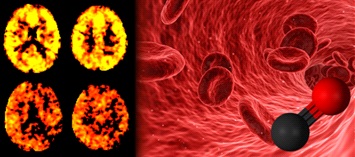Research
Carbon monoxide is a poisonous gas that most of us breathe in every day through air pollution, and even small amounts of the gas have significant impact on physiology, including cerebral blood flow and cerebrovascular function. Worldwide, the World Health Organisation estimates that 4.2 million deaths per year occur due to air pollution, and we know that carbon monoxide air pollution is linked with increased incidence of diseases, such as stroke and vascular dementia. However, we don’t know precisely how low-level carbon monoxide exposure affects health and contributes to pathophysiology.
Our research uses both human volunteers, model organisms and cell culture (both 2D and 3D) to probe the impact of low-level carbon monoxide exposure on physiological function. We take a multidisciplinary approach, from imaging (MRI, EEG, ultrasound) to laboratory techniques, including a custom-build carbon monoxide exposure chamber. Using small doses of carbon monoxide, we study neural activation, blood flow and vascular reactivity, blood markers of CO exposure, physiological parameters and behavioural outcomes. We study impact on foetal development, with a focus on the brain and cardiovascular system, and we work to identify underlying cellular mechanisms of CO impact on health and development.
